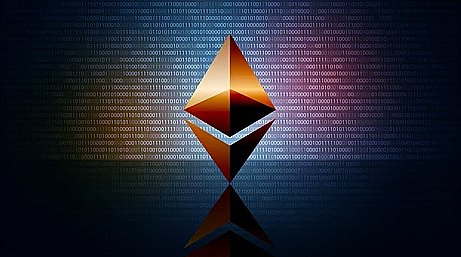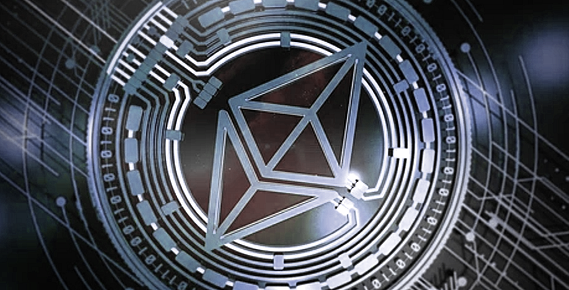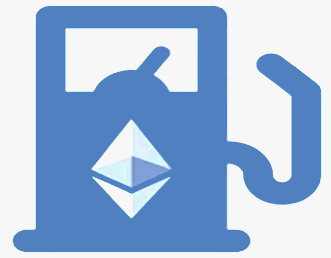Accredited InvestorsAltcoinAnatoli UnitskyAnti-Money Laundering (AML) In CryptoAPIArbitrageArtCoin TokenArticle DirectoryASICAuction Terminology GlossaryBasics of Stock Market InvestingBear MarketBest Crypto Payment Provider In the WorldBitcoinBlockchainBlockchain ConfirmationBlockchain Consensus MechanismBlockchain ForkBlockchain GlossaryBored Ape Yacht ClubBuild a Business That OutperformsBull MarketBuying SkyWay SharesByzantine Fault Tolerance (BFT) ExplainedCasascius CoinCentral Bank Digital Currency (CBDC)Centralized Crypto ExchangeCoinCoinsetCold WalletCollateralCommodity Futures Trading Commission (CFTC)Cross-Chain TechnologyCRUCrypto ExchangeCrypto GlossaryCrypto JokesCrypto Terms to KnowCrypto TickerCryptocurrencyCryptographyCryptojackingCryptounit BlockchainCryptounit GlossaryCryptounit ProgramdApp (Decentralized Application)Dead CoinDecentralized Exchange (DEX)Decentralized Finance (DeFi)Difference Between Bitcoin and EthereumDifferent Ways of Investing MoneyDigital CurrencyDistributed LedgerDo Your Own Research (DYOR)Dollar Cost Averaging (DCA)Dow Jones Industrial Average (DJIA)EncryptionERC-20ERC-721EthereumEvoScentFear Of Missing Out (FOMO)Fear, Uncertainty and Doubt (FUD)Fiat MoneyFNT Fintech CompanyGenesis BlockGlobal Unit PayGlossary of Banking TermsGlossary of Business TermsGlossary of Financial TermsHalvingHODLHot WalletHow Do I Start InvestingHow Rich is Satoshi Nakamoto?How to Create a BlockchainHow to Find Private InvestorsHow to Get Into FintechHow to Program Smart ContractsI Am Thrilled to Be a Part of This Global ProjectInitial Coin Offering (ICO)Initial Public Offering (IPO)Initial Token Offering (ITO)Innovation Basalt TechnologyInnovative Transportation TechnologiesInternational Bank Account Number (IBAN)Investing in Gold Mining StocksInvesting in Gold MiningJagerJoy of Missing Out (JOMO)Know Your Customer (KYC)LedgerLiquidity in CryptocurrencyMaker and Taker Fees in Crypto TradingMarket Capitalization (Market Cap)Meme CoinMetal Credit CardMetaMaskMillenials Now Have Access to Generational WealthMy Best Investment EverNew Digital EvolutionNFT GlossaryOff-Chain TransactionsOn-Chain TransactionsOpen Edition NFTPeer-to-Peer (P2P)Personal Loan GlossaryProbably the Best STO on the MarketProof of Stake (PoS)Real Estate Glossary of TermsReal Estate Investing GlossaryRebase TokenSecurities and Exchange Commission (SEC)Security Token ExchangesSecurity Token Offering (STO)Soulbound Decentralized Identities for Security TokensSoulbound ID Launch by Stobox Proves a SuccessSoulbound TokensStoboxStock Market GlossaryTestimonialsTether Platform and Token (USDT)UnitEx ExchangeUnitsky String TechnologiesUNTBUSDUValidatorWe Started Investing When We Were 25What are Blue Chip NFT?What are Blue Chip Stocks?What are Crypto Assets?What are Crypto Smart Contracts?What are CryptoPunks NFT?What are Digital Assets?What are Digital Collectibles?What are Gas Fees?What are Gas Wars?What are Hashmasks?What are Non Fungible Tokens?What are Non-Sufficient Funds (NSF)?What are Soulbound Tokens (SBT)?What are Stablecoins in Crypto?What are Transactions Per Second (TPS)?What are Utility NFTs?What are Utility Tokens?What Does Burning Crypto Mean?What Does Diamond Hands Mean?What Does Paper Hands Mean?What Does To The Moon Mean?What Does WAGMI Mean?What Happened to Satoshi Nakamoto?What is a 51% Attack?What is a Baby Boomer?What is a Backlink?What is a Banner?What is a Barcode?What is a Bid-Ask Spread in Crypto?What is a Block in Blockchain?What is a Block Reward?What is a Blockchain Address?What is a Blockchain Node?What is a Blockchain Oracle?What is a Blog?What is a Bond?What is a Bot?What is a Broker?What is a Business Accelerator?What is a Cash Cow?What is a Commercial Bank?What is a Commodity?What is a Con?What is a Credit?What is a Credit Limit?What is a Credit Rating?What is a Crypto Airdrop?What is a Crypto Bridge?What is a Crypto Scam?What is a Crypto Token?What is a Crypto Wallet?What is a Crypto Whale?What is a Crypto Winter?What is a Cryptocurrency Public Ledger?What is a Cryptocurrency Roadmap?What is a DAO?What is a Dark Pool?What is a Day Trader?What is a Dead Cat Bounce?What is a Default?What is a Derivative?What is a Digital Credit Card?What is a Fiscal Quarter?What is a Fungible Token?What is a Governance Token?What is a Grace Period?What is a Hard Fork?What is a Hot Wallet?What is a Hybrid Blockchain?What is a Hybrid PoW/PoS?What is a Joint Account?What is a Market Cap?What is a Merkle Tree in Blockchain?What is a Mining Farm?What is a Nonce? What is a PFP NFT?What is a POS System?What is a Prepaid Card?What is a Private Blockchain?What is a Private Key?What is a Public Blockchain?What is a Public Key?What is a Reserve Currency?What is a Ring Signature?What is a Routing Number?What is a Rug Pull in Crypto?What is a Safe Deposit Box?What is a Satoshi?What is a Security Token?What is a Seed Phrase?What is a Shitcoin?What is a Sidechain?What is a Soft Fork?What is a Spot Market?What is a State Bank?What is a SWIFT Code?What is a Tax Identification Number (TIN)?What is a Time Deposit?What is a Transaction Account?What is a Variable Interest Rate?What is a Virtual Assistant (VA)?What is a Virtual Card?What is a Virtual Currency?What is a Visa Card?What is a Whitelist in Crypto?What is a Whitepaper?What is Accounts Payable (AP)?What is AMA in Crypto?What is Amortization?What is an Accrual?What is an ACH Transfer?What is an Actuary?What is an Addendum?What is an Algorithm?What is an Angel Investor?What is an Annuity?What is an Asset?What is an ATM?What is an Atomic Swap?What is an Audit?What is an Avatar?What is an EIN?What is an Embargo?What is an Entrepreneur?What is an IDO (Initial Dex Offering)?What is an Interest Rate?What is an Internet cookie?What is an Investment Bank?What is an NFT Drop?What is an NFT Floor Price?What is an Ommer Block?What is an Orphan Block?What is an Outstanding Check?What is an Overdraft?What is Artificial Intelligence (AI)?What is B2B (Business-to-Business)?What is B2G (Business-to-Government)?What is Bartering?What is Bitcoin Dominance?What is Bitcoin Pizza Day?What is Blockchain Immutability?What is Blockchain Used For?What is BRICS?What is Business-to-Consumer (B2C)?What is C2C (Customer to Customer)?What is Capitalism?What is Catfishing?What is CFD Trading?What is Check Kiting?What is Cloud Mining?What is Communism?What is Content Marketing?What is Decentralization in Blockchain?What is DeFi in Crypto?What is Delisting?What is Depreciation?What is Digital Marketing?What is Diversification?What is Double Spending?What is Dumb Money?What is Dumping?What is Earnings Per Share (EPS)?What is Economics?What is Email Marketing?What is Equity?What is Etherscan?What is Fintech?What is Foreign currency?What is Forex?What is Fundamental Analysis (FA)?What is GameFi?What is Generative Art NFT?What is Gwei?What is Hard Currency?What is Hash Rate?What is Hashing in Blockchain?What is Inflation?What is Initial Game Offering (IGO)?What is Interest?What is Interest Income?What is Mainnet?What is Mastercard?What is Metaverse in Crypto?What is Mining in Cryptocurrency?What is Minting NFT?What is Mobile Banking?What is Money Laundering?What is NFT Alpha?What is NFT Metadata?What is NFT Rarity?What is NGMI Meaning?What is Nominal Interest Rate?What is Online Banking?What is Open-End Credit?What is OpenSea NFT Marketplace?What is Personal Identification Number (PIN)?What is Play-to-Earn?What is Polygon?What is Proof of Authority (PoA)?What is Proof of Work (PoW)?What is Public Key Cryptography?What is Pump and Dump?What is Quantum Computing?What is Refinancing?What is Retail Banking?What is Ripple?What is Sharding?What is Slippage in Crypto?What is Smart Money?What is Solvency?What is Soulbound ID?What is SSL?What is Staking in Cryptocurrency?What is Technical Analysis (TA)?What is Testnet?What is the Ask Price?What is the Better Business Bureau (BBB)?What is the Bid Price?What is the Dark Web?What is the InterPlanetary File System (IPFS)?What is the Gold Standard?What is the Lightning Network?What is the Prime Rate?What is the Sandbox?What is the Secondary Market?What is the World Bank?What is Tier 1 Capital?What is Tokenomics?What is TRC-20?What is Universal Banking?What is Unspent Transaction Output (UTXO)?What is Usury?What is Volatility in Crypto?What is Wash Trading?What is Web3?What is Whisper?What is XRP?What is Zero-Knowledge Proof (ZKP)?Who is Beeple?Who is Satoshi Nakamoto?Who is Vitalik Buterin?Why Tokenization is a Safe HavenWhy You Should Try Your Hand at Trading
What is Gwei?
- Home
- Blockchain Glossary
- Gwei
Cryptocurrencies, similar to fiat currencies, can be divided into smaller units. Ethereum has various denominations of Ether, with gwei being the most significant as it represents network gas (transaction) fees.

What is Gwei?
Gwei is a denomination of ether (ETH), the digital coin used on the Ethereum network. Ethereum, like Bitcoin, is a blockchain platform where users transact to buy and sell goods and services without the use of a middleman or third-party interference.
Ether, like fiat currencies such as the US dollar or euro, is divided into denominations. However, while 1 USD equals 100 cents, 1 ETH equals one billion Gwei.
The prefix nano is used to denote one-billionth of something, so Gwei is also known as nanoether. Some cryptocurrencies have such high fiat currency exchange rates that very small denominations are required. These micro-denominations allow a cryptocurrency's market value to rise as far as supply and demand will allow while still allowing for smaller transactions.
Gwei, along with ETH, is the most commonly used denomination of Ethereum's cryptocurrency, and it is especially useful when discussing gas, which is the Ethereum network's pricing mechanism. When users perform a transaction or execute smart contract operations, this mechanism is responsible for calculating the fees.
In the Ethereum network, besides Gwei, there are other units used to measure the amount of gas or the cost of a transaction. These units include Wei (the smallest unit), Kwei (1,000 Wei), Mwei (1 million Wei), and Ether. These units help make it easier for users to understand the cost of their transactions, as the smallest unit (Wei) can be difficult to read. The larger units (Kwei, Mwei, and Ether) are easier to understand and use.
Here is a list of Ethereum network units and their corresponding values expressed in Wei:
| Unit | Wei |
|---|---|
| Kwei | 1,000 |
| Mwei | 1,000,000 |
| Gwei | 1,000,000,000 |
| Microether | 1,000,000,000,000 |
| Milliether | 1,000,000,000,000,000 |
| Ether | 1,000,000,000,000,000,000 |
A Short History of Gwei
Gwei, pronounced "gee-way", is a unit of Ethereum's cryptocurrency, Ether (ETH). It is used to denote the network's gas fees, which are the fees required to process transactions and execute smart contract operations on the Ethereum network.
Gwei was introduced in 2015, when Ethereum was first launched, as a way to standardize the pricing of network fees. Prior to its introduction, there was no uniform way to measure the cost of gas on the Ethereum network, leading to confusion among users.
The word "Gwei" is derived from the Chinese word "Gui Wei", which means "ghostbusters". This name was chosen as a nod to the idea that gas fees are used to prevent spam and bad actors on the Ethereum network, similar to how ghostbusters eliminate unwanted ghosts.
Over time, Gwei has become an integral part of the Ethereum ecosystem, and its use has grown in tandem with the growth of the Ethereum network. Today, Gwei is widely used by developers, traders, and users to measure the cost of executing smart contracts and transactions on the Ethereum network.
While Gwei is often used as the default unit of measurement for gas fees, it can also be broken down into smaller units such as Wei, the smallest unit of Ether, or even larger units such as Pwei (Finney) or Twei (Szabo). This allows users to express gas fees in a way that is most meaningful to them, and makes it easier to compare fees across different transactions.
How are Gwei Fees Calculated?
The calculation of gwei fees is based on several factors, including the complexity of the transaction or contract operation, the current demand for network resources, and the price of ETH.
The complexity of a transaction or contract operation is measured in terms of computational steps required to execute it. The more complex the operation, the more computational resources it requires, and therefore the higher the gas fee.
The demand for network resources is another important factor that affects gwei fees. When the network is congested with a high number of transactions, the competition for network resources increases, driving up the cost of gas fees.
Finally, the price of ETH is also a factor in the calculation of gwei fees. When the price of ETH is high, the cost of gas fees tends to be higher as well, as the fees are denominated in ETH.
When a user submits a transaction or contract operation to the Ethereum network, they specify the maximum gwei fee they are willing to pay for the operation. Validators, who process transactions and execute contract operations, then select transactions with the highest fees to include in the next block.
Related Articles

Ethereum
Ethereum was created with the goal of being scalable, programmable, secure, and decentralized. It is the blockchain of choice for developers and...

What Are Gas Fees?
Fees are paid in ether, but gas and ether are not the same thing. Computing activities are quantified in terms of "gas cost". Each unit of gas, on the other hand, has a "gas price" defined in ether.

What are Crypto Smart Contracts?
Smart contracts are a characteristic of second-generation cryptocurrencies, particularly Ethereum, which popularized the idea when it debuted in 2015.

Validator
A validator is a node in a proof-of-stake (PoS) blockchain network that is responsible for validating transactions and maintaining the integrity of the network. In a PoS blockchain, validators are chosen to create...
- Home
- Blockchain Glossary
- Gwei